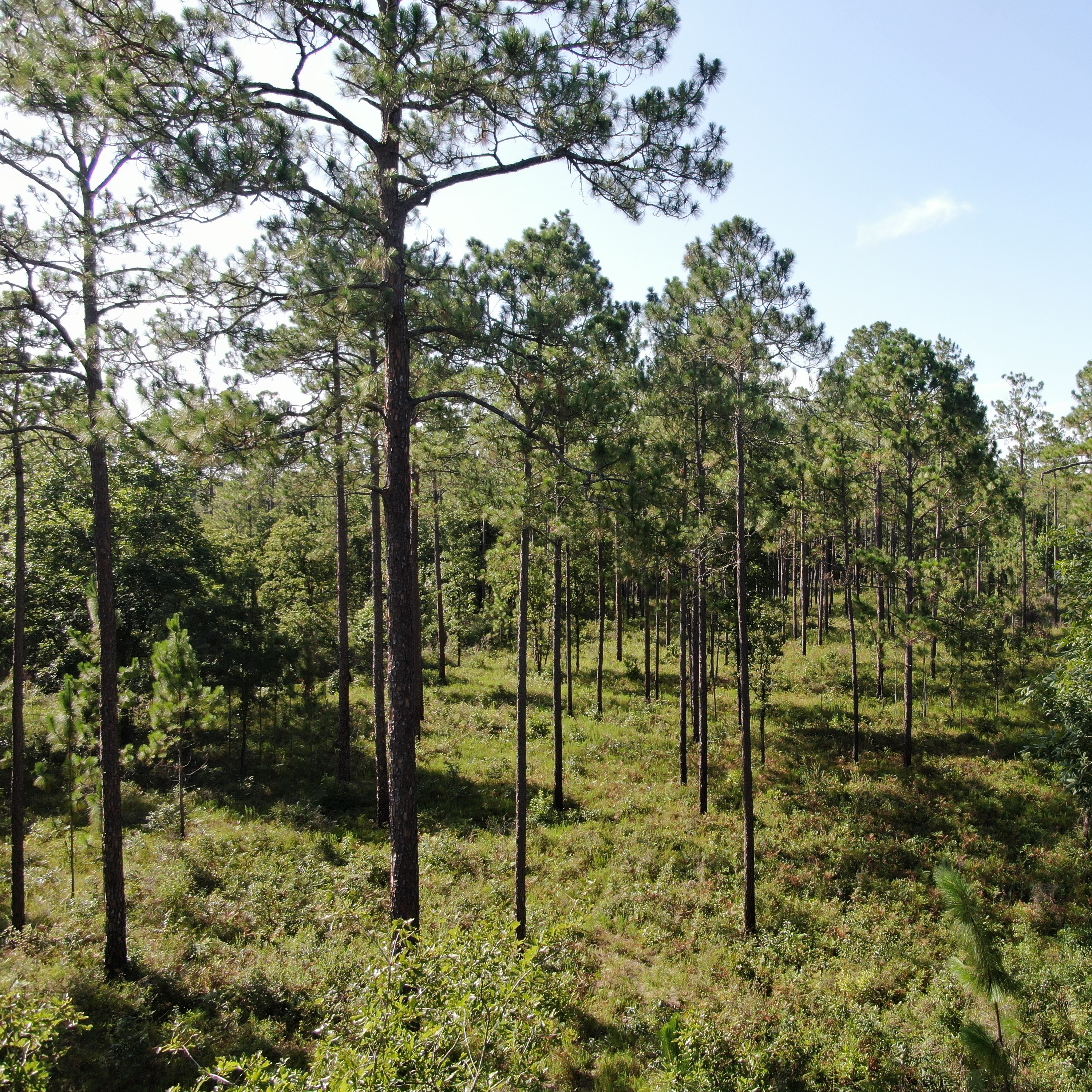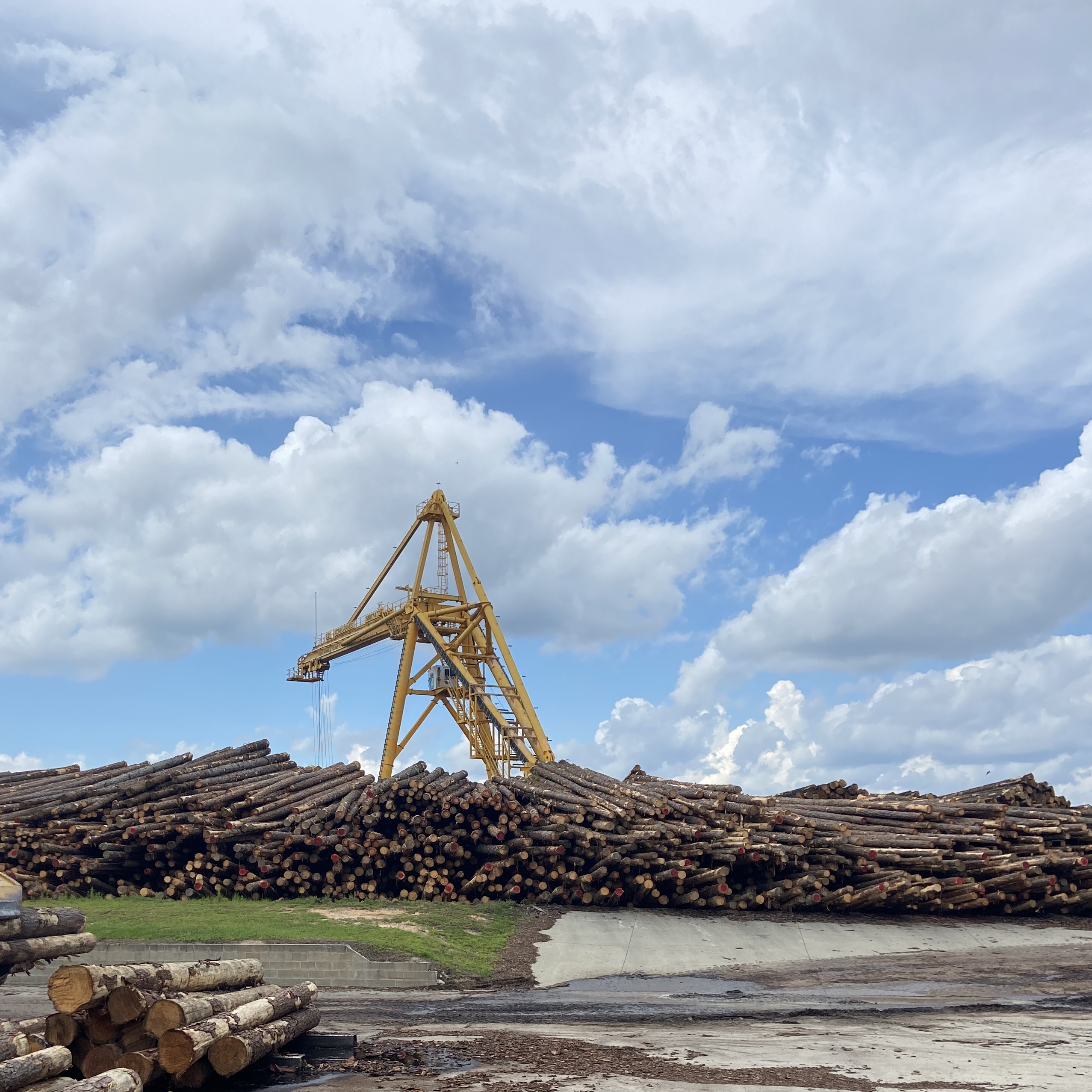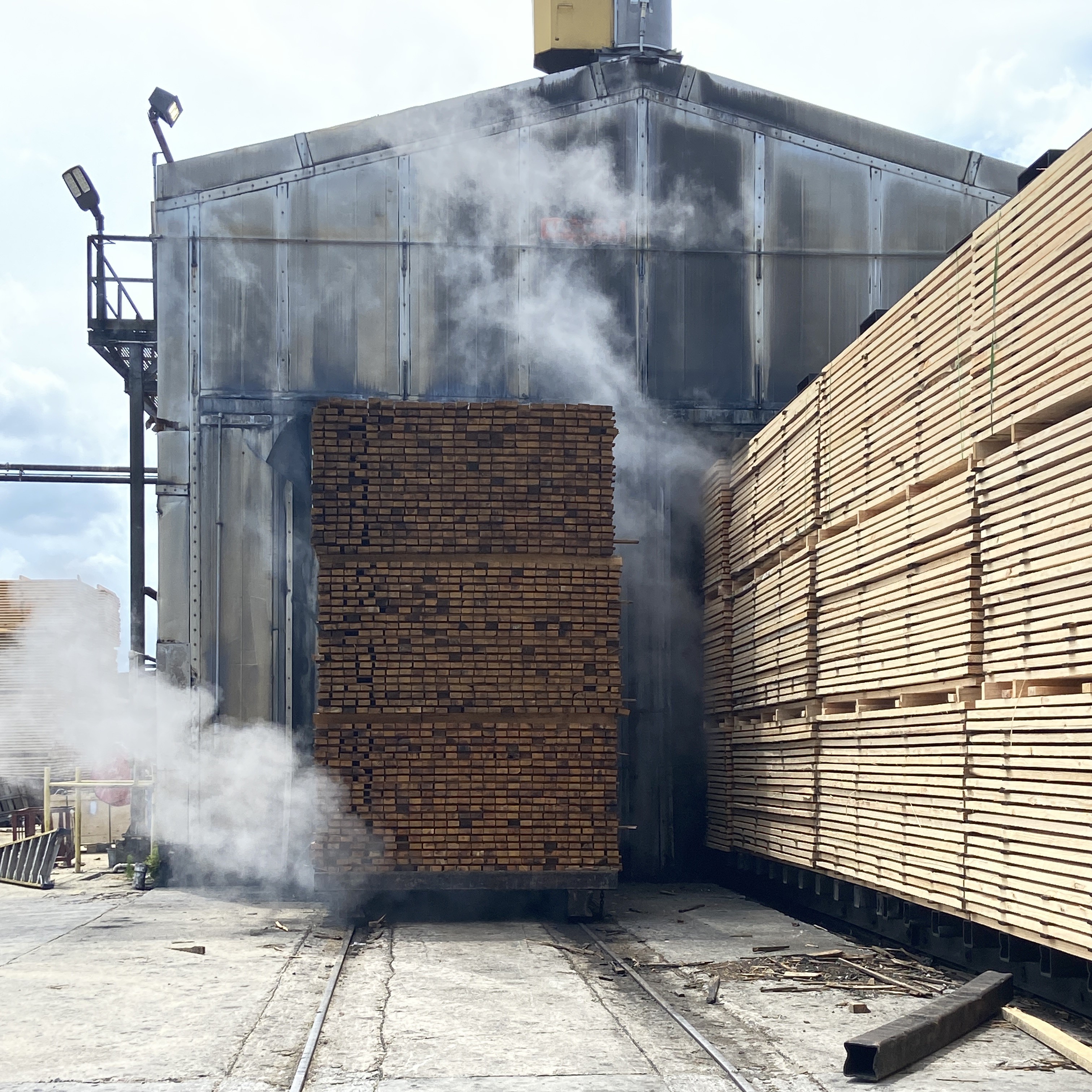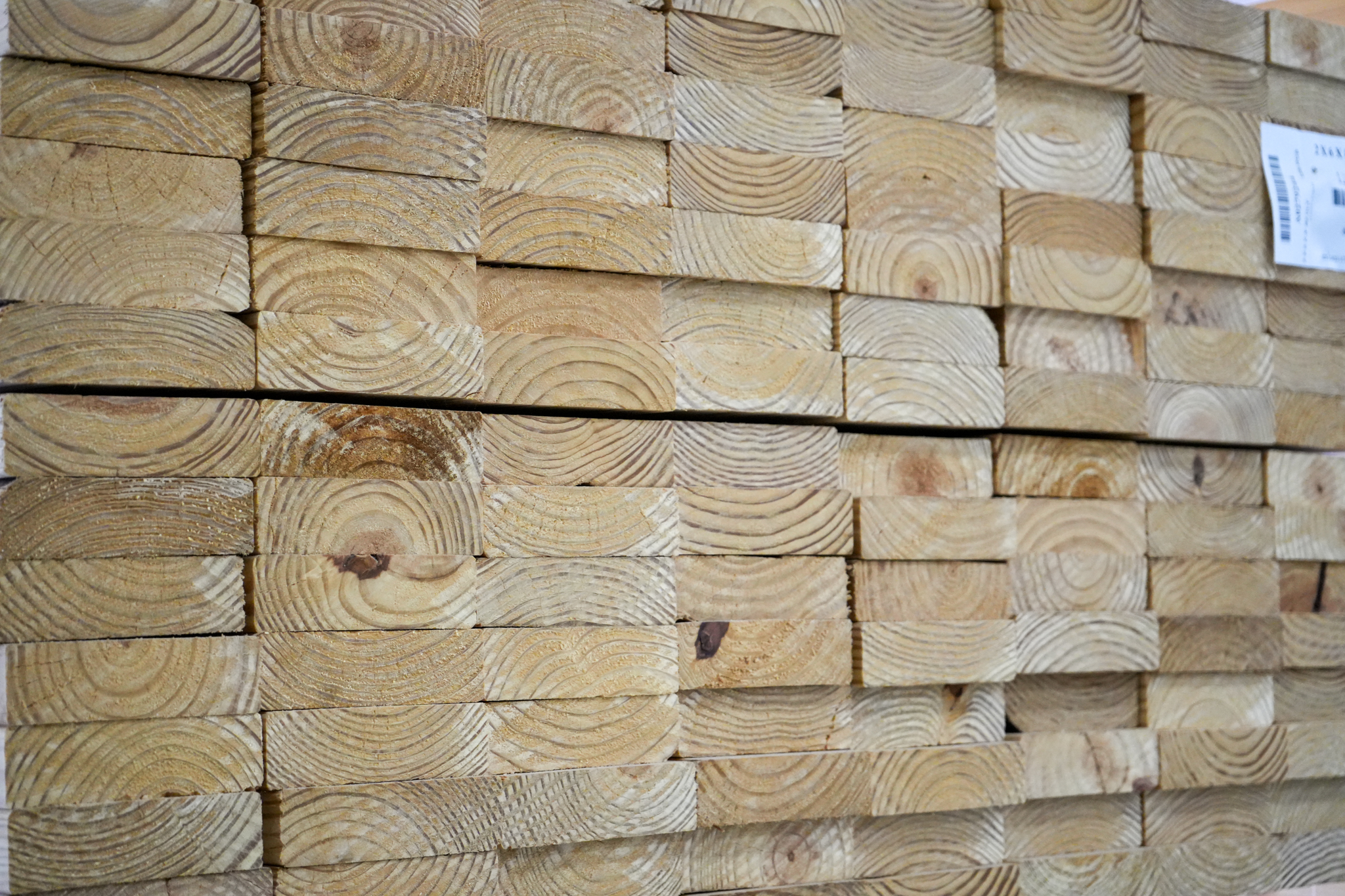The Forest
Forests cover about half of Florida. Most of these forests are dominated by pine trees, including loblolly pine, slash pine, and longleaf pine. In the fields of architecture and construction, these are grouped and described as “Southern Yellow Pine” (SYP), and are among the most sustainable and widely grown tree species in the southeastern United States. These native trees are well-known for their rapid growth rates, ability to be quickly regenerated, and suitability for sustainable forestry practices. Southern Yellow Pines grow relatively quickly compared to other species, typically reaching maturity in 25 years, making them an ideal renewable resource for wood products.
Southern Yellow Pine forests play a significant role in carbon sequestration, absorbing carbon dioxide from the atmosphere as they grow. Using SYP wood products in construction stores this carbon for the long term, making mass-timber an eco-friendly choice.
Foresters monitor growth and harvest levels to ensure a continuous supply of timber without depleting the resource.
Southern Yellow Pine forest.

Southern Yellow Pine forest, aerial view.

Milling Southern Yellow Pine (SYP) is a crucial step in transforming this resource into versatile wood products for construction. The milling process emphasizes efficiency, resource conservation, and maximizing the value of each tree harvested, literally utilizing all parts of the tree.
Logs arrive at the sawmill and are sorted by size. The first step in processing the logs is debarking. Bark is utilized as mulch and biofuel.
The debarked logs are cut into rough lumber using advanced sawmilling technology to determine the best way to saw each log to maximize yield and quality. This step involves computerized equipment that analyzes the shape and size of the log to optimize cutting patterns, minimizing waste and enhancing the efficiency of the process. Sawdust and woodchips created as part of this process are used as biofuel, or sold to other mills that produce paper and cellulosic-plastics.
After sawing, the rough lumber is graded based on its quality, strength, and appearance. Southern Yellow Pine is sorted into different grades, depending on its intended use, such as structural beams, framing, flooring, or other products.
Lumber is then kiln-dried to reduce its moisture content to the desired level. Drying the wood is essential for stabilizing it, preventing warping, shrinking, or cracking over time. Kiln drying also enhances the wood's resistance to decay, making it more durable and suitable for construction.
Once dried, the surface of the lumber is smoothed in a process called "planing." This step prepares the wood for its final applications, ensuring that each piece meets specific size and finish requirements. Finished lumber can then be utilized in a variety of forms, including as framing, in roof trusses, or specialized building materials.
Image 1.

Image 2.

Image 3.

The processed wood is then manufactured into various building products, such as beams, flooring, or panels. This step may also involve combining wood with other materials, like plywood or engineered wood products.
Southern Yellow Pine is commonly used in mass-timber construction, including products like cross-laminated timber (CLT), glued-laminated timber (glulam), and laminated veneer lumber (LVL), which offer strength, versatility, and sustainability for modern building designs. Boards that have been determined to be used in mass-timber production are transported to the manufacturer, where they are planed, glued, and pressed into large panels. Panels are then custom milled into their final shapes, and transported to the building site for final erection.
Stacked timber.

Stacked timber.









